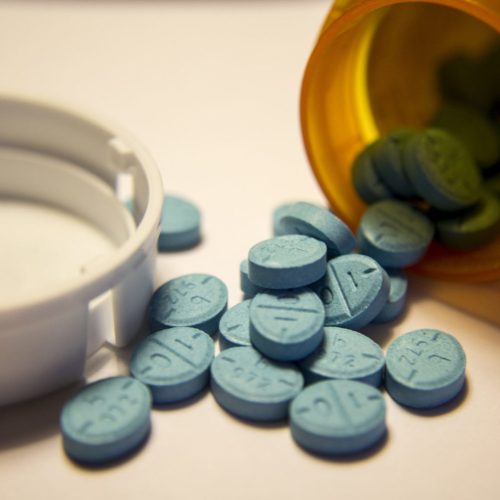SUBSTANCE ABUSE
Opioid
Opioid use and addiction have been problems from the early history of humankind. Information about opium and its therapeutic purposes dates back to the 3rd and 4th century BC. The great philosopher Hippocrates refers to their incredible analgesic properties, devising the motto “divinum opus est sedare dolores,” which translates to “relieving pain is divine work.” It was seen as a treatment with miraculous airs, being considered by several cultures as the “essence of immortality.”
Early Development
In 1660, Thomas Sydenham created laudanum, a tincture based on opium. Sydenham said, “among all the existing cures that Almighty God has granted to man to deal with their sufferings, none compares with the effectiveness and universality of opioids.” Laudanum became a widespread medicine for dulling the effects of many painful conditions.
The Creation of Morphine
The discovery with the greatest impact on opioid use was in 1803. German chemist, F.W. Sertumer managed to extract an active alkaloid from the poppy plant. It bore the name morphine, in relation to Morpheus, known as the great god of dreams. Morphine was six times stronger than opium.
The extraction of alkaloids from the plant allowed many other drugs to be created, such as codeine in 1832 by Robiquet and papaverine discovered by Merck in 1848.

What Makes a Drug an Opioid?
Opioids are considered to be a large family of analgesic drugs whose interaction takes place in the opioid receptor channels of cells. These drugs may come from a poppy, like morphine, or be synthesized in a laboratory, like fentanyl.
When opiates enter the blood, they spread and join the opioids receptors on neurons, reducing the feeling of pain, inducing a state of pleasure, and causing extreme relaxation.
Side Effects
Each and every one of the factors that make opioids important pain relievers can also cause harmful and deadly effects, if not used properly. In addition to addiction, patients can build tolerance, forcing them to take larger doses of the drug. Larger doses can cause a decrease in heart rate and respiratory rate, leading to death.
Common side effects include:
•Constipation
•Drowsiness
•Dizziness
•Dry skin
•Vomiting
In Cases of Opioid Overdose
Deaths from overdose have been reduced by the drug naloxone. Through education and closer regulation of doctors, the availability of prescribed opiate products and their abuse by adolescents have decreased considerably. Since 2012, deaths related to heroin overdose have been increasing. But, thanks to advances in medicine, there are effective drugs involved in the treatment of opioid use disorders, such as methadone and buprenorphine.
The Risk of Opiate Abuse
Opioids are considered safe when consumed for a short period, and when directions from the doctor are followed. However, because its effect also produces a feeling of euphoria, it is usually used improperly, i.e., it is consumed by increasing doses without consulting a doctor. There is a risk of addiction, even if taken as prescribed by the doctor. You should carefully monitor how the drug is making you feel and report any changes to your doctor.
What Drugs are Considered Opioids?
HEROIN
Heroin can be taken by injection, snorted, smoked, or swallowed. Because it is illegal, drug dealers mix the powder with anything that has a similar white powdery appearance. You can never be sure what is in the drug you buy. It is also mixed with other drugs to increase the “high” and addictiveness. Adding other drugs also increases the risk of death.
CODEINE
Codeine is used to relieve low-intensity pain. It is commonly prescribed to reduce coughing. It relieves all the symptoms of a cough but does not fix the underlying cause.
Codeine can be mixed with acetaminophen, carisoprodol, aspirin, and promethazine. If you ever consume a product containing codeine, you should review the instructions and the possible negative interaction with other drugs you are taking.
Fentanyl is a potent synthetic opiate like morphine, but 50 to 100 times more effective. It is often used illegally and can be very deadly when mixed with heroin. It is usually prescribed to patients suffering from intense pain, usually after undergoing surgery. It is also used to treat patients suffering from chronic pain.
Dilaudid or hydromorphone is a type of drug that is applied subcutaneously, i.e., under the skin, and can also be administered intravenously or intramuscularly. Normally, the injection time for this drug is 2 to 3 hours, depending on the circumstances.
Note that the doctor will be able to administer the proper amount of hydromorphone during treatment and monitor you for any side effects you may experience. During the dosing process, the patient should tell the doctor how he or she is feeling.
It is worth mentioning that if you have participated in several sessions of hydromorphone injection applied over several days, remember that the treatment cannot be stopped suddenly. If you stop the treatment quickly, you may experience several obvious withdrawal symptoms such as watery eyes, yawning, sweating, chills, dilated pupils, irritability, anxiety, and weakness, among others.
Hydrocodone is an opiate derived from codeine. It is used as an oral analgesic given to relieve intermediate to severe pain. This drug can be found in various forms, including syrup, capsules, or tablets. Can cause addiction in people, and strong withdrawal symptoms.
Methadone is an effective drug from the opiate class. It is used to deal with the pain caused by cancer and. It can be administered orally, by suppository, or by intravenous, intramuscular or subcutaneous application.
Methadone outperforms morphine in the treatment of nerve-related pain by cancer cells. It is also used as an intermediate step in the drug detox process.
Morphine is a drug that comes from the opium plant, which is commonly known as the opium poppy. It is an opiate used to relieve pain of varying intensities. It can be administered orally, i.e., by tablets, capsules, and oral solutions. It can also be administered parenterally, i.e., intravenous, intramuscular, intrathecal, epidural, and subcutaneous injections
The use of morphine is intended for the following situations:
•Postoperative pain
•Oncological pains
•Itinerant pains between an intermediate and severe level
•Chronic pains that do not respond to other narcotics
•Pain related to myocardial infarction
Oxycodone is an opioid used to relieve moderate to severe pain. Based on 18 outstanding studies, results show that oxycodone is an incredibly powerful analgesic and treats pain efficiently.
Opioids are a group of drugs consisting of heroin, certain synthetic opioids (such as fentanyl), hydrocodone, methadone, morphine, and oxycodone, among others. All of these drugs act on the opioid receptors in the body.
The following are common drugs:
Is Tramadol an Opioid?
Yes. Tramadol contains an opioid to make it more effective for pain management.
Is Xanax an Opioid?
No. Xanax is a benzodiazepine used to treat anxiety and panic disorders. But, like an opioid, Xanax can be highly addictive.
How Do Opioids Work?
Opiates play a role as endogenous peptides, also known as endorphins. These endogenous opioid peptides together with opioid molecules, whether consumed as a medicine or as a drug, tend to react at the same particular receptor point on the periphery of certain nerve cells and some smooth muscle cells in the intestine.
Effects on the Brain
Opioid molecules stimulate receptors in the brain. These opioid molecules fit perfectly in opioid receptors, which manipulate the brain to feel good. When they bind to the receptor, they quickly generate an effect known as an inherent reaction, which is why they are considered to be agonist substances. Also, there are some opiate receptor allies that adhere to the receptors, but they do not produce any kind of effect, i.e., they are devoid of any inherent activity, and are therefore known as opiate antagonists.
Location of Opioid Receptors
Opioid receptors are normally located at the distal end of the axon, specifically in its presynaptic section, managing the expulsion of neurotransmitters in order to limit the mechanism of the action potential so that the released transmitting substance decreases.
The different types of opioids work on different classes of opioid receptors: kappa, delta, and mu. The opioids most consumed by people with opioid use disorder are those whose narcotic effect acts directly on the “mu” receptors.
Health Risks of Opioids
Opiate drugs have the job of relieving pain, but in most circumstances, they don’t remove pain. But, the euphoric sensation produced by these narcotics fuel addiction.
Opioid Withdrawal Symptoms
A large number of people go through withdrawal when they reduce, or stop, taking drugs. Some of the signs and symptoms that people have as part withdrawal:
•Sleep disorders
•Increased pain
•Extreme anxiety
•Drowsiness
•Fever or sweating
•Diarrhea or vomiting
•Inconsistent blood pressure
•Racing heart rate
SAFE HARBOR TREATMENT CENTER
Find Help With Addiction Treatment
If you, or someone you love are struggling with an addiction to opiates, it is vital to enter recovery and get sober. Don’t let opioids destroy your life. Safe Harbor Treatment Center can help you get your life back through detox and rehab. Call Now: 1-833-277-2379

